In April 2021, biologists in Michigan’s Detroit River encountered a true aquatic giant: a lake sturgeon measuring 6 feet 10 inches and tipping the scales at 240 pounds. This remarkable female, with a girth nearing four feet, is believed to be over a century old, having likely hatched around 1920 when Detroit was the fourth-largest city in America.
Lake sturgeon, often referred to as “living fossils,” have graced North American waters for millions of years. Females of this species can live up to 150 years, growing continuously throughout their lives. This particular specimen’s impressive size and age highlight the resilience and longevity of these ancient creatures.
Once abundant, lake sturgeon populations have declined due to overfishing and habitat loss. Encounters with such large individuals are rare and underscore the importance of ongoing conservation efforts to protect and restore their habitats. After documentation, this majestic sturgeon was released back into the Detroit River, continuing her journey through the waters she’s called home for over a century.
Record-Breaking Catch
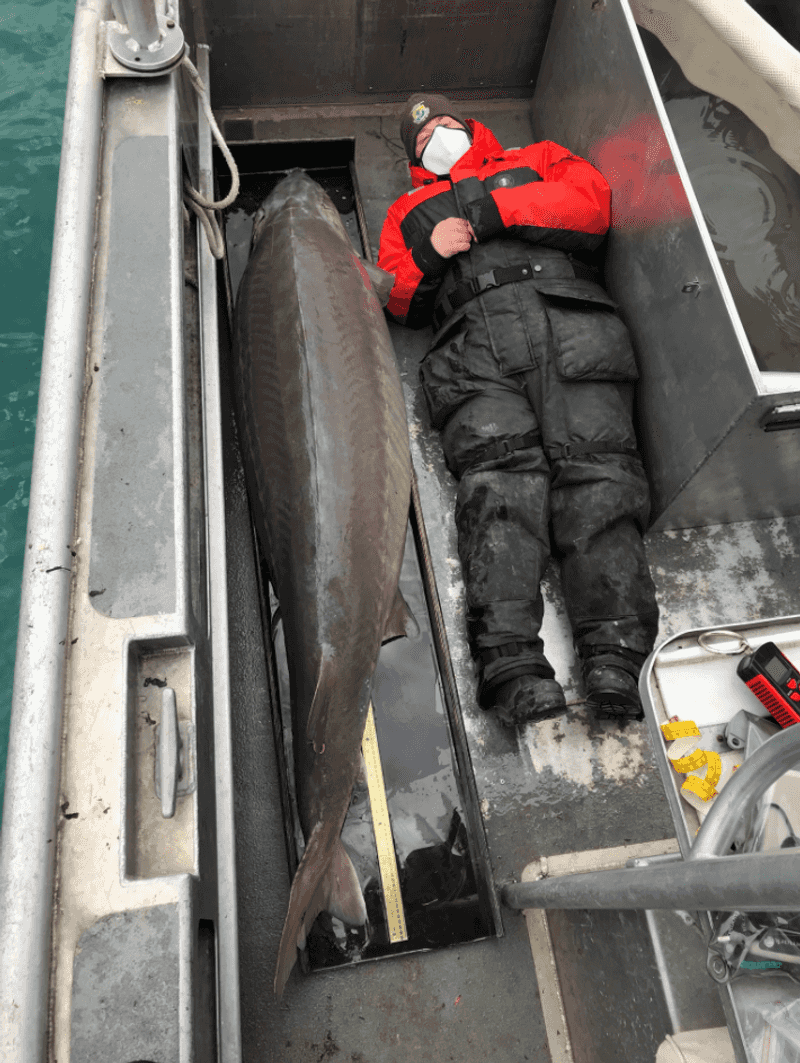
In the annals of fishing history, one catch stands tall—or rather, long. The largest sturgeon ever caught in the Great Lakes weighed an astonishing 240 pounds and measured nearly 7 feet. Imagine reeling in a fish longer than your average human! This monumental catch was not only a test of strength but a testament to the angler’s skill and patience. Anglers from across the globe dream of such a catch, though few achieve it. It’s a story of triumph, perseverance, and the thrill of the chase that captivates fishing enthusiasts.
The Ancient Behemoth
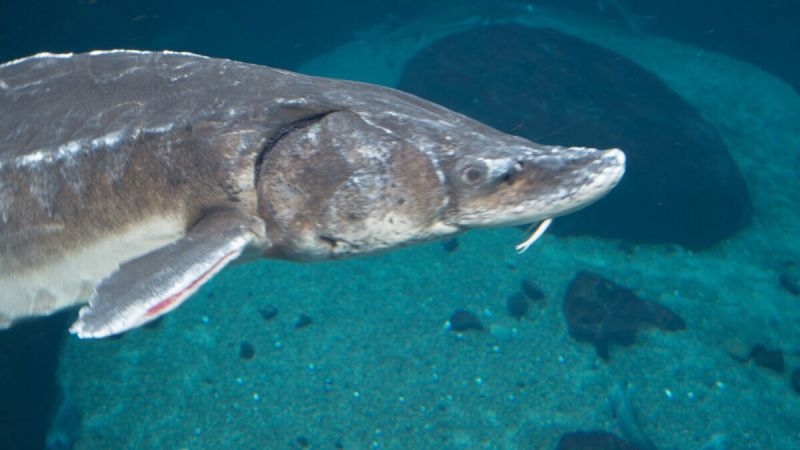
Sturgeons are often referred to as living fossils, and for a good reason. These magnificent creatures have roamed the waters for more than 150 million years. With bony plates and a shark-like tail, their prehistoric appearance is unmistakable. Observing a sturgeon, you might feel like you’ve stepped back in time to an era where dinosaurs roamed the Earth. Their ancient lineage is a testament to their adaptation and resilience in changing environments. It’s a reminder of nature’s enduring beauty, captured in a fish that has stood the test of time.
Elusive Giants
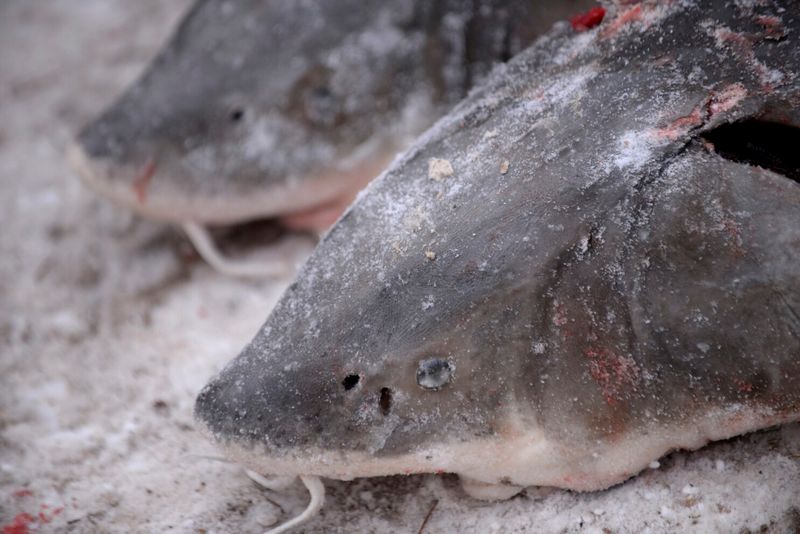
Sturgeons are elusive giants, often hiding in the deep, murky waters of the Great Lakes. Their ability to blend into their surroundings makes them a challenging catch for even the most seasoned anglers. Patience is key, as these magnificent creatures can often evade capture. Watching them glide silently through the water, one can’t help but feel a sense of awe and respect. Their elusive nature adds to their mystique, making every encounter feel like a rare and precious moment.
The Great Lakes Habitat
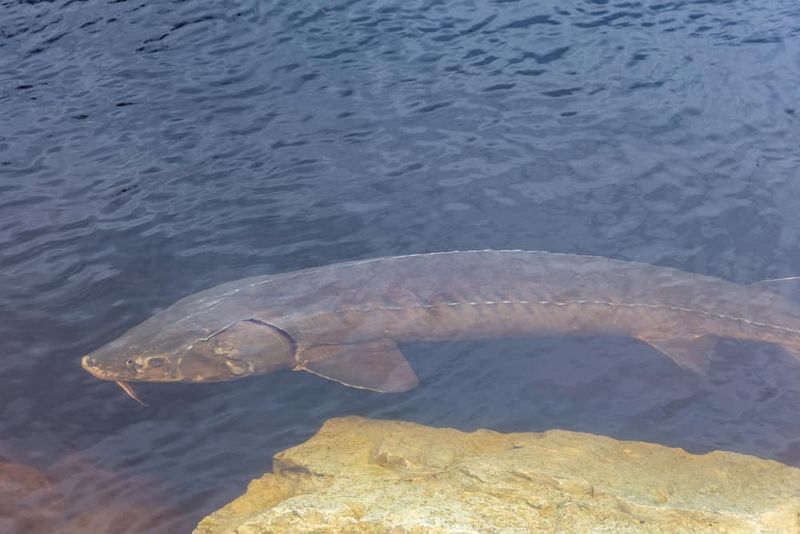
The Great Lakes provide a unique and diverse habitat for sturgeons, offering a mix of fresh and brackish waters. This environment supports a rich biodiversity, making it an ideal breeding ground for these ancient fish. The lakes’ vastness and depth offer the perfect refuge for sturgeons seeking both shelter and sustenance. It’s within this complex ecosystem that the delicate balance of life is maintained, allowing for the continued survival of these majestic giants.
Conservation Efforts
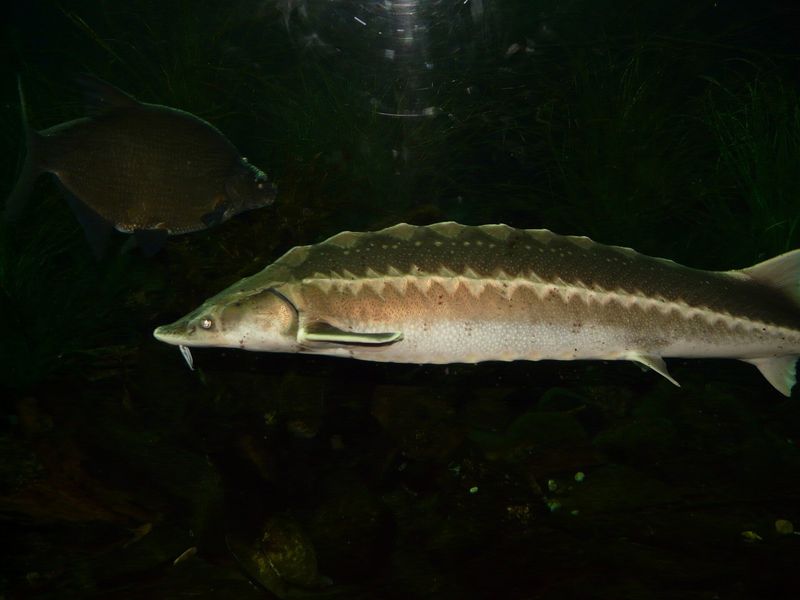
Conservation efforts are vital in preserving sturgeon populations, as these remarkable fish face numerous threats. Overfishing, habitat destruction, and pollution have led to significant declines in their numbers. Dedicated teams work tirelessly to monitor and protect these ancient creatures, often tagging and releasing them back into their natural environments. Their efforts help ensure that future generations can witness the awe-inspiring sight of a sturgeon gliding through the Great Lakes.
Mysteries of Migration
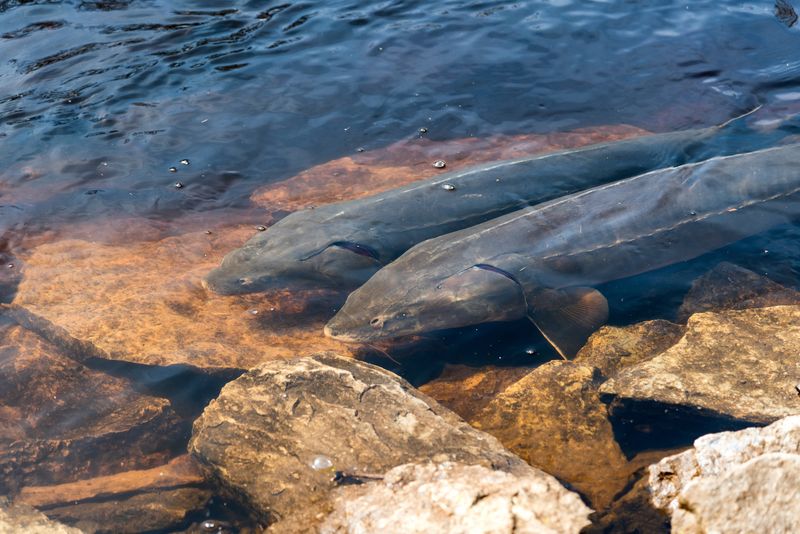
The migration patterns of sturgeons remain one of nature’s great mysteries. These ancient fish undertake long journeys through the Great Lakes, guided by instincts honed over millennia. As they move, they connect various ecosystems, playing a crucial role in maintaining the lakes’ ecological balance. The exact triggers for their migrations are still studied, adding an intriguing layer of mystery to their already fascinating lives. Watching them migrate is like witnessing a timeless ballet of nature.
Cultural Significance

For many Native American tribes, the sturgeon holds deep cultural significance. These ancient fish were a vital resource, providing food, tools, and even spiritual inspiration. Ceremonies celebrating the sturgeon continue to this day, honoring their role in traditional life and maintaining a spiritual connection to nature. The reverence for these fish highlights the deep bond between people and the natural world, a relationship built on respect and gratitude.
Life Cycle and Longevity

The life cycle of a sturgeon is as fascinating as it is lengthy. These fish can live for over a century, witnessing the changing tides of history. From the moment they hatch, they embark on a journey of growth and survival. Sturgeons mature slowly, often taking many years to reach reproductive age. This slow growth rate makes them vulnerable to threats, but it also underscores their resilience and determination to endure. Their longevity is a testament to nature’s ability to create life forms that transcend time.
Feeding Habits
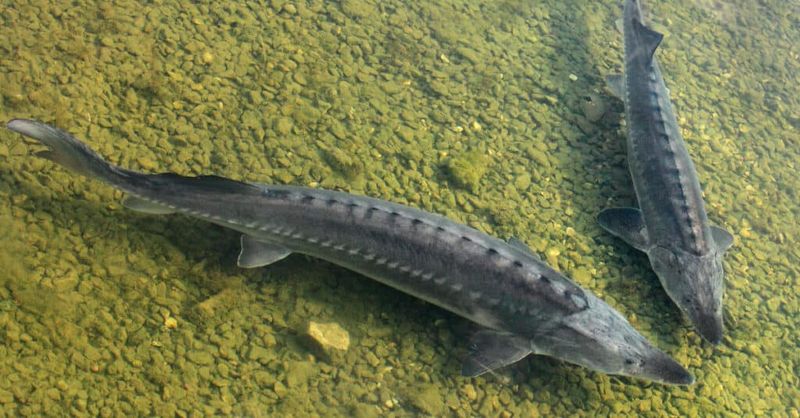
Sturgeons are bottom-feeders, using their sensitive barbels to detect prey hidden in the lakebed. Their diet consists mainly of small fish, insects, and crustaceans. Watching a sturgeon feed is like observing a meticulous search for hidden treasures beneath the water’s surface. Their feeding habits play a crucial role in maintaining the health of the lake ecosystem, as they help control the population of smaller aquatic organisms. It’s a delicate dance of life where each movement serves a purpose.
The Legacy Continues
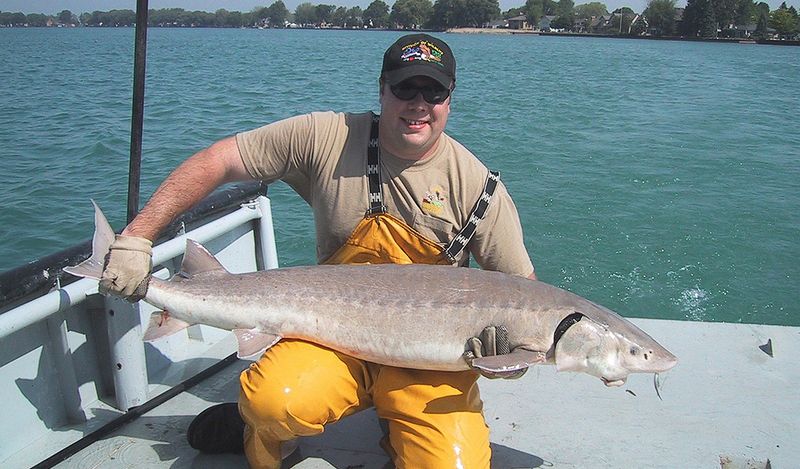
The legacy of the sturgeon in the Great Lakes is one of awe and inspiration. Young anglers continue to be drawn to the challenge of catching these majestic fish, each hoping to set their own record. Passing down the tradition, stories of legendary catches fuel the dreams of future generations. The sturgeon’s enduring presence in the lakes symbolizes nature’s resilience and the timeless allure of the hunt. It’s a legacy that connects the past, present, and future in a shared appreciation for the wonders of the natural world.

